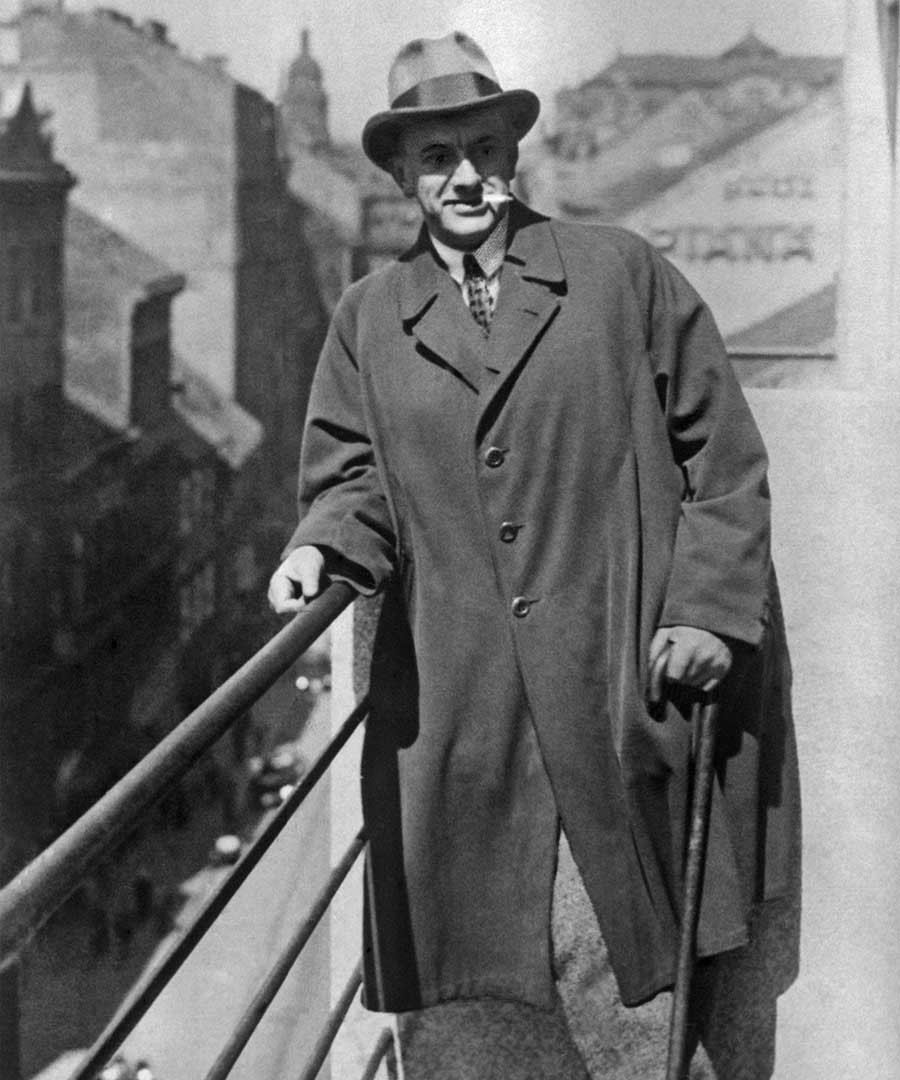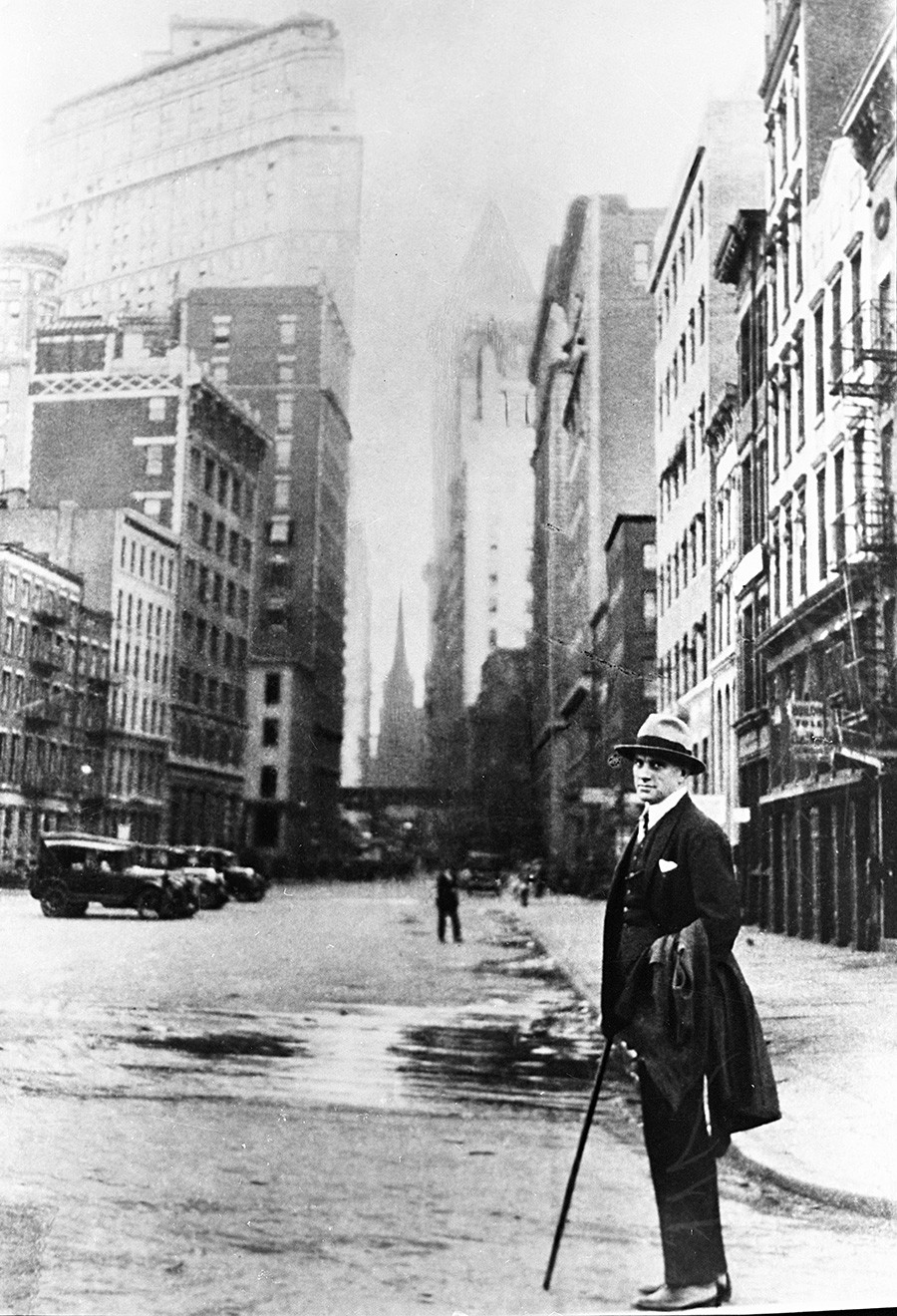'I would like to live and die in Paris': Mayakovsky abroad

Soviet poet Mayakovsky in Prague, 1927
TASSVladimir Mayakovsky was one of the major Russian poets of the first half of the 20th century and a leading member of the futurism movement. His poems, which are marked by their rebellious spirit and unconventional broken rhythm, are still popular. He invented new words, randomly placing them within sentences, while the lines of his poems themselves form symbolic visual representations in their own right.
Mayakovsky was unconventional in his private life too: from 1918, he lived in a ménage à trois with his lover Lilya Brik and her husband Osip Brik. He conducted numerous affairs with other women at the same time.
Globetrotting cultural ambassador
Mayakovsky
He returned from each of those trips with suitcases full of books,
His works have been translated into English, German, Czech, French, Japanese and Chinese. The Malik-Verlag publishing house in Germany published the first translations of his poems, during his lifetime.
Captivated by Paris
In the 1920s, Mayakovsky made several trips to Europe, which he used as a means of getting to know contemporary European art.
He made his first public appearance in front of a foreign audience on Oct. 20,
Paris made a great impression on Mayakovsky. After his visit, he wrote an entire collection of poems called Paris, in which he professed his love for the French capital. "If I were a Vendome column: I would marry La Place de la Concorde,” he wrote.
In Paris, Mayakovsky visited the studios of Pablo Picasso and Fernand Léger, met with Jean Cocteau and even attended Marcel Proust’s funeral.
He returned to Berlin in 1924. In his biography of the poet for the Outstanding Lives series, Alexander
A Muscovite in New York

Mayakovsky in New York
RIA NovostiMayakovsky did achieve his dream of visiting the U.S. in 1925.
Mayakovsky then spent three months in the U.S., visiting New York, Chicago, Detroit, Philadelphia,
All rights reserved by Rossiyskaya Gazeta.
Subscribe
to our newsletter!
Get the week's best stories straight to your inbox